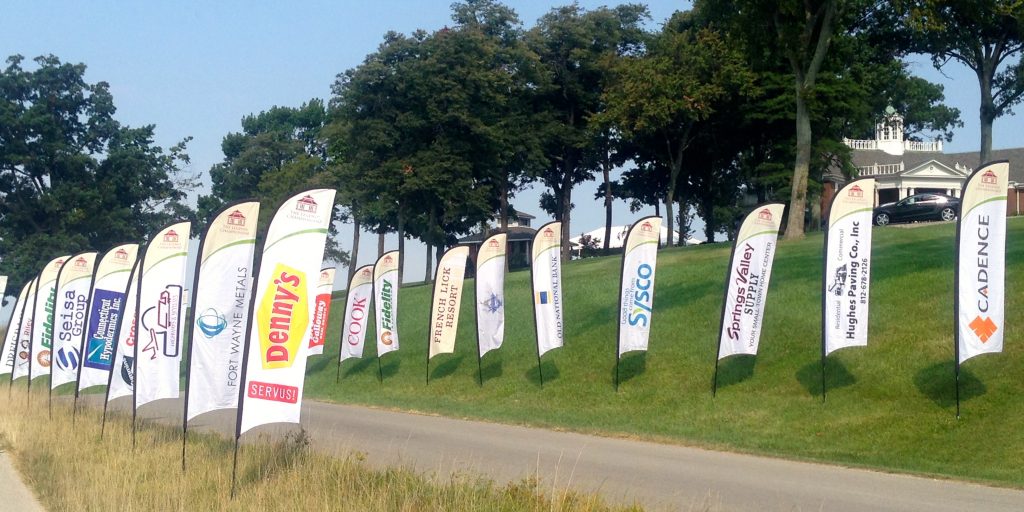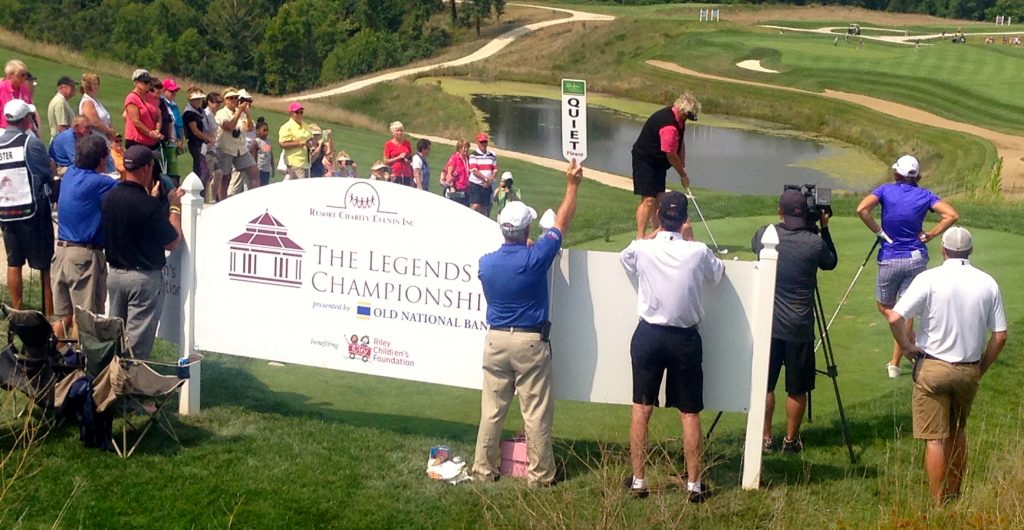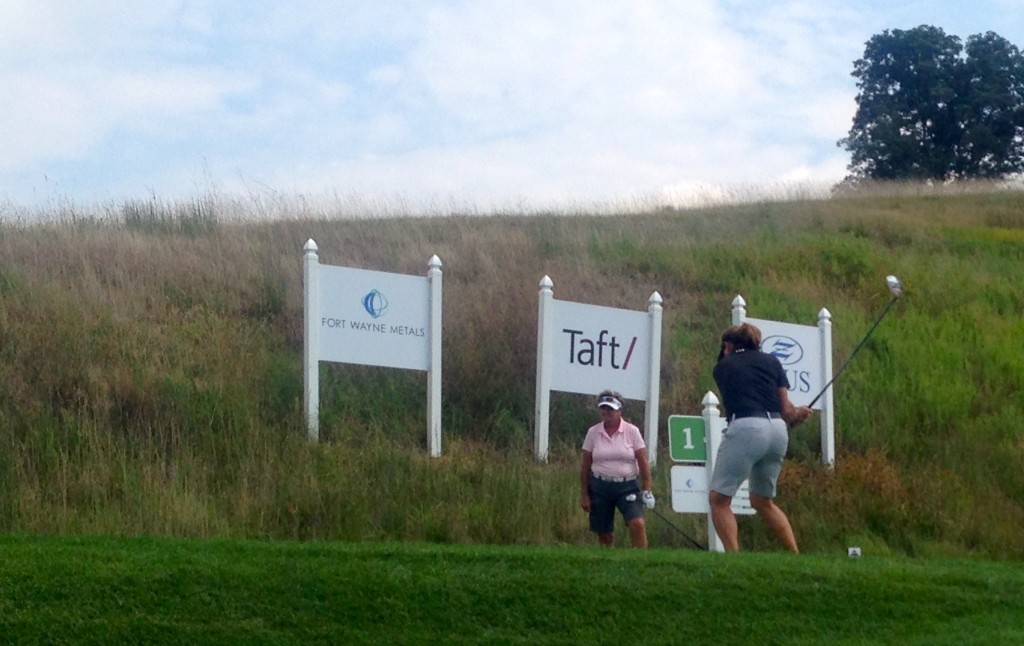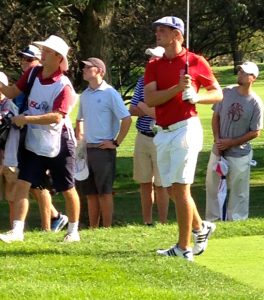Kevin Streelman, Mark Wilson and Luke Donald all survived The Barclays, first tournament of the PGA Tour’s lucrative FedEx Cup Playoffs but this week’s challenge means much more to those Chicago-connected players.
The Barclays brought the top 125 players in the FedEx rankings after the 47 regular season tour events to New Jersey. This week’s Deutsche Bank Classic, which tees off on Friday in Boston, takes only the top 100 and the top 70 after its conclusion on Monday get to play in Chicago’s event – the BMW Championship Sept. 17-20 at Conway Farms in Lake Forest.
As was the case at The Barclays, there’ll be a 36-hole cut in Boston. There’ll be no cut at the BMW or the series-ending Tour Championship in Atlanta. All four tournaments have an $8.25 million purse and the series winner gets an additional $10 million bonus.
So, big money is on the line for Streelman, Wilson and Donald. Streelman, who grew up in Wheaton, is in the best position going to Boston. He’s No. 65 in the FedEx standings but will most likely need to survive the cut there to stay in the top 70.
Wilson, who lives in Elmhurst, and Donald, the former Northwestern star and a Conway Farms member, need to do better than that. Both were up to the first challenge at The Barclays. Wilson and Donald tied for 24th place there. Wilson was ranked No. 114 going in and is now 85th in the standings while Donald was No. 119 going in and is now 87th.
Jordan Spieth, the Masters and U.S. Open champion who missed the cut at The Barclays, remains No. 1 on the FedEx point list while Jason Day, the PGA Championship and Barclays winner, is No. 2. British Open champion Zach Johnson, who will defend his title at the BMW Championship, is No. 11.
The Chicago-based Western Golf Assn. conducts the BMW Championship but will have another playoff event to handle before that. The WGA also conducts the Hotel Fitness Championship, first event of the four-tournament Web.com Tour Playoffs at Sycamore Hills in Fort Wayne, Ind. Its 72-hole run begins on Thursday.
Players ranked from 126-200 in the PGA Tour’s FedEx Cup standings will join the top 75 from the Web.com Tour season money list at Sycamore Hills. The field there also includes an Illinois-based trio – Scott Langley, Luke Guthrie and D.A. Points.
Dilemma for International Crown
The second staging of the UL International Crown, the Ladies PGA team event coming to Rich Harvest Farms in Sugar Grove next year, could be a bit different than the first playing in Baltimore in 2014. Spain, winner of the first Crown, isn’t qualified for the second yet.
The top eight countries on the Rolex World Ranking on April 4 will be in the next International Crown. Spain is now ranked ninth, behind – in order – Korea, the United States, Japan, Australia, Sweden, Chinese Taipei, Thailand and England. Each country will have four players, but they won’t be finalized until the rankings are announced on June 13.
Rich Harvest owner Jerry Rich hosted a one-year-out kickoff for the 2016 Crown last week. Weekly tickets for the July 19-24 event are now on sale and volunteer registration is open, both by visiting www.ULCROWN.com.
Here and there
The 93rd Illinois PGA Championship concludes its 54-hole run on Wednesday on Medinah’s No. 1 course. Mike Small, the Illinois men’s coach, is going for his third straight victory and 12th in 15 years but he’ll need a hot round after a 72-73 start left him well back in the pack – 11 strokes behind leader Jim Billiter, assistant pro at Merit Club in Libertyville. Billiter, who shot a 66 on Tuesday, is at 8-under-par 134 and owns a three-stroke lead over Matt Slowinski, the head pro at Conway Farms.
Small’s Illini team, ranked No. 1 in GolfWeek’s preseason coaches poll, opens its season at Rich Harvest in the two-day Northern Intercollegiate tourney Sept. 12-13 hosted by Northern Illinois University.
Thomas Detry, who won the 2012 NCAA title while playing for Illinois, captured the Czech Masters on the European PGA Tour last week. That boosted his world ranking 104 places, to No. 141.
Chadd Slutzky, of Deer Park, won the Illinois State Mid-Amateur title last week at Flossmoor Country Club, beating defending champion Andrew Price, of Lake Bluff, in a three-hole aggregate score playoff.
The Chicago District Golf Assn. will hold its Better Ball of Pairs Championship next Tuesday at Kemper Lakes in Long Grove.














